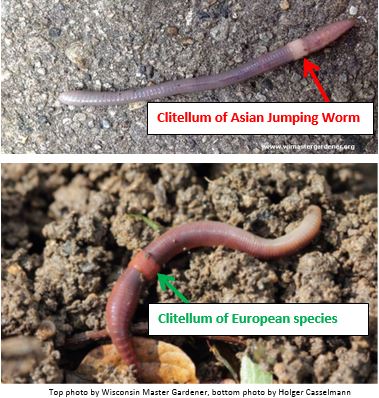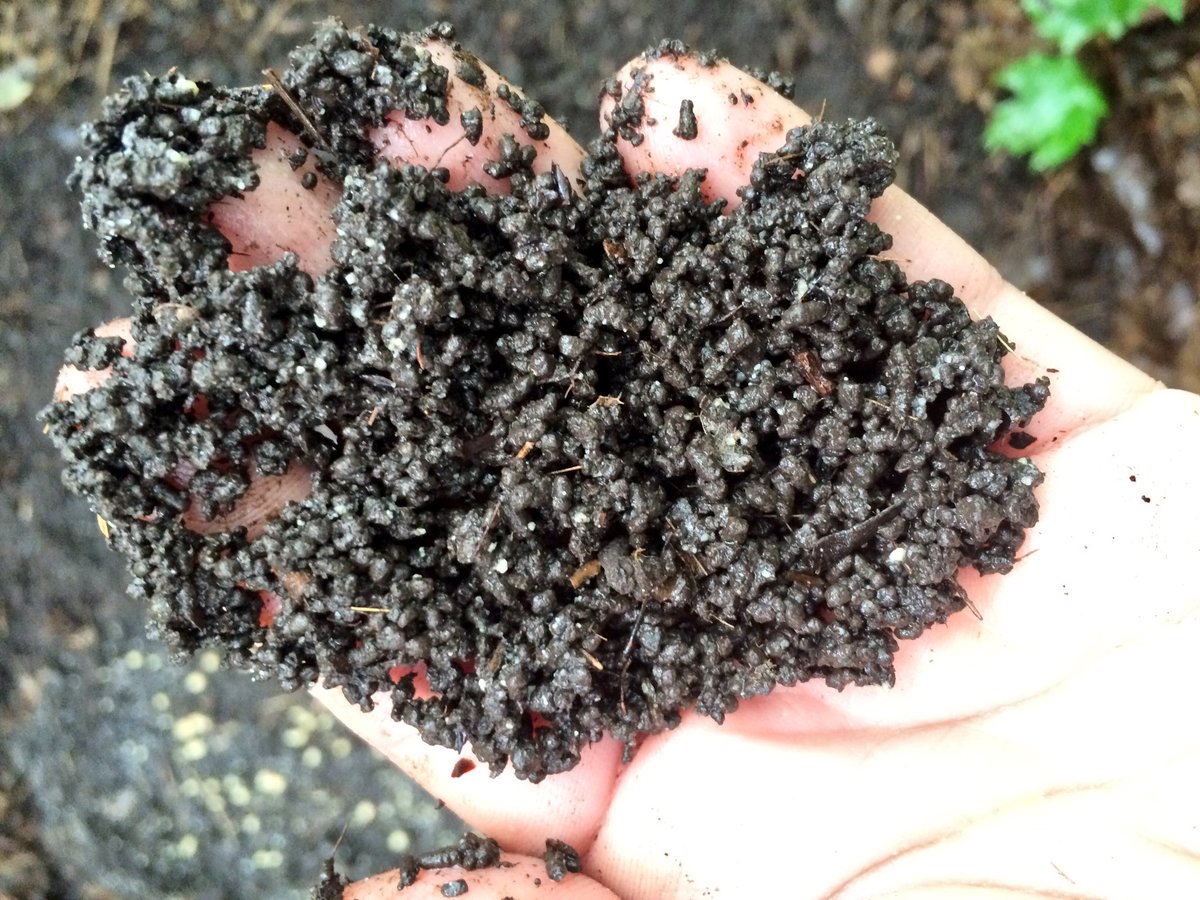Invasive Jumping Worm
Amynthas species
Description
Invasive jumping worms, which include 51 species in the genus Amynthas including Amynthas agrestis and Amynthas tokioensis, are non-native to the United States and feed on leaf litter and mulch, and the soil they leave behind is dry and grainy like coffee grounds, which deprives trees and other plants of essential nutrients. They can deplete soil of nutrients, damage plant roots and alter the soil's water holding capacity. Invasive jumping worms do not create channels in the soil for plants nor do they recylce nutrients into the soil for plants to use. They can cause invertebrates in the soil to die which can impact wildlife species that feed on them. They can also change the carbon nitrogen ratio in soils which can impact the effectivness of pesticides in agricultural fields that have been invaded by these worms. When they are disturbed, they thrash violently, slither like snakes and even jump into the air . They are sometime called "Alabama jumper", "crazy jumping worms" or "snake worm" and they can reproduce asexually. Learn more here.
They can be confused with the European earthworm (also known as nightcrawlers which are also non-native to the US). Invasive jumping worms are smooth, glossy gray or brown and 1.5 to 8 inches long. They are relatively easy to identify if you take a look at their clitellum (the band around the body of a worm). The clitellum on a jumping worm is milky white to gray-colored, smooth and completely encircles the body of the worm. In contrast, the clitellum of European earthworms does not wrap entirely around the worm. Also, the European earthworm's clitellum is raised above the body of the worm, not smooth (Source of this information). See their crazy movements here.
Visit this website for more information on how to identify this worm and its impacts. Visit this page to learn how to control.
Pathway of Introduction
It's unclear exactly how the worm, which is native to southeast Asia, arrived in the United States, although most believe that it was brought by boat in a plant shipment and spread from there. They have been sold as bait and can survive more than 20 minutes underwater. They have also been marketed for use for composting. Learn more here.
Location in Nebraska
Invasive jumping worms have been found in Douglas, Sarpy, Lancaster and Platte counties in Nebraska (locations shown below). If you find an invasive jumping worm at a location NOT SHOWN BELOW report it here.

Prevention
Invasive jumping worms produce coccoons which can easily be spread on shoes and equipment. Always clean shoes and equipment before going to another site. Do not release invasive jumping worms alive into the environment. There are legal restrictions on invasive jumping worms in Minnesota, Wisconsin and New York. Learn more about how to stop their spread here. Learn how to control them here.
Wisconsin DNR

